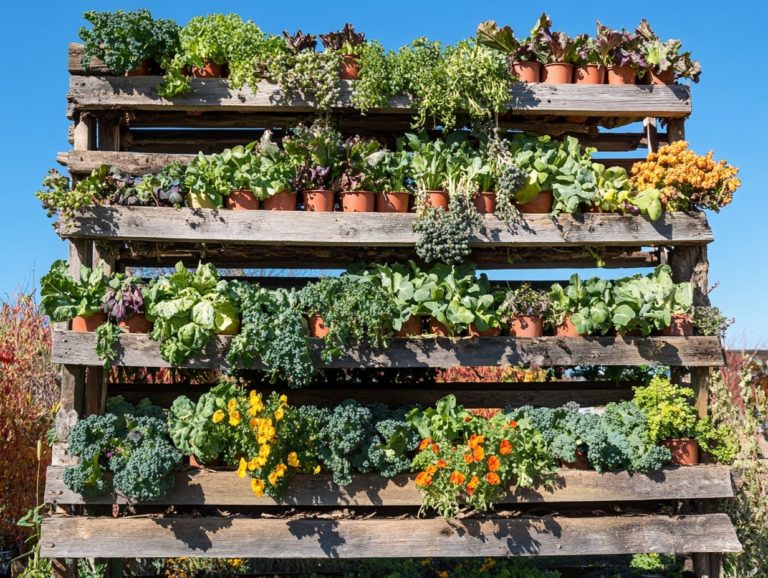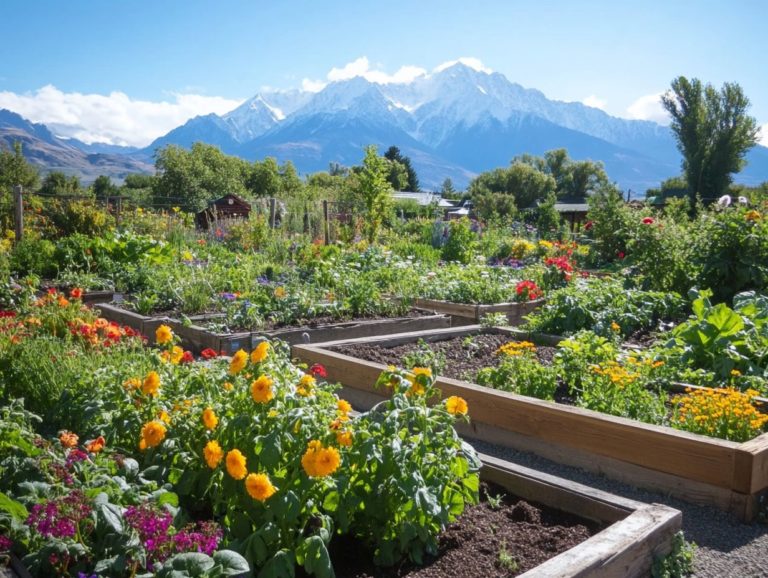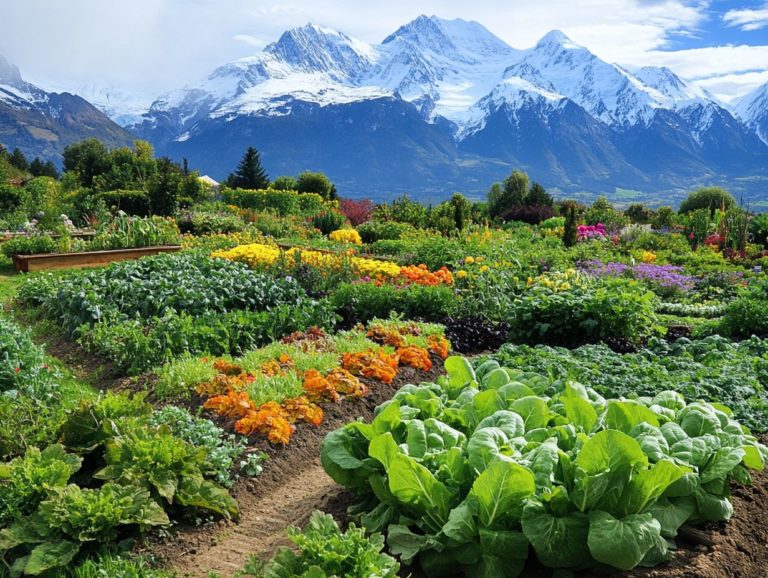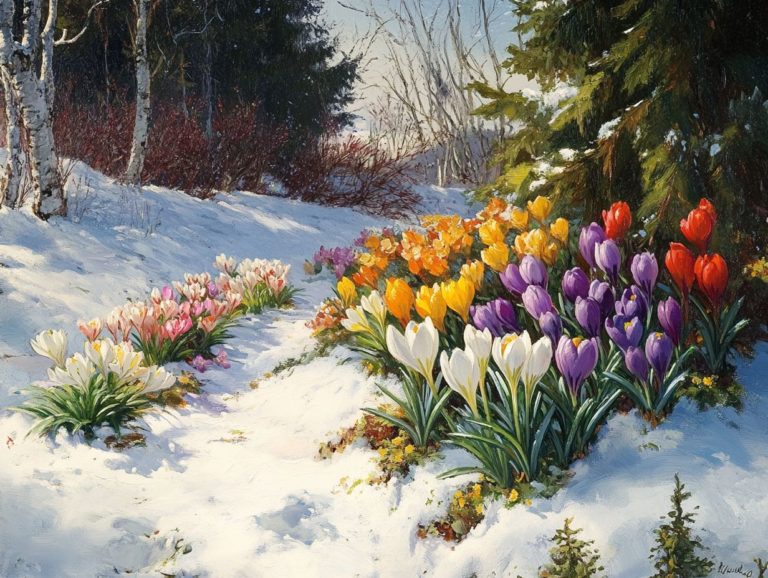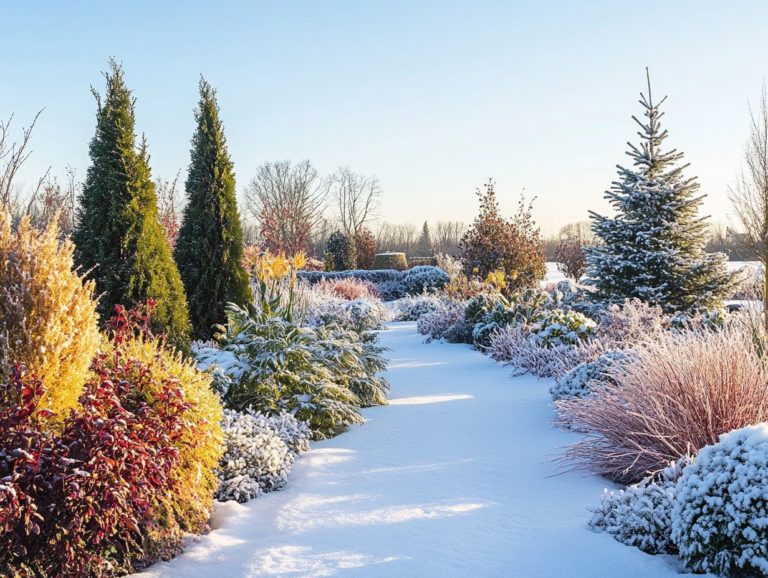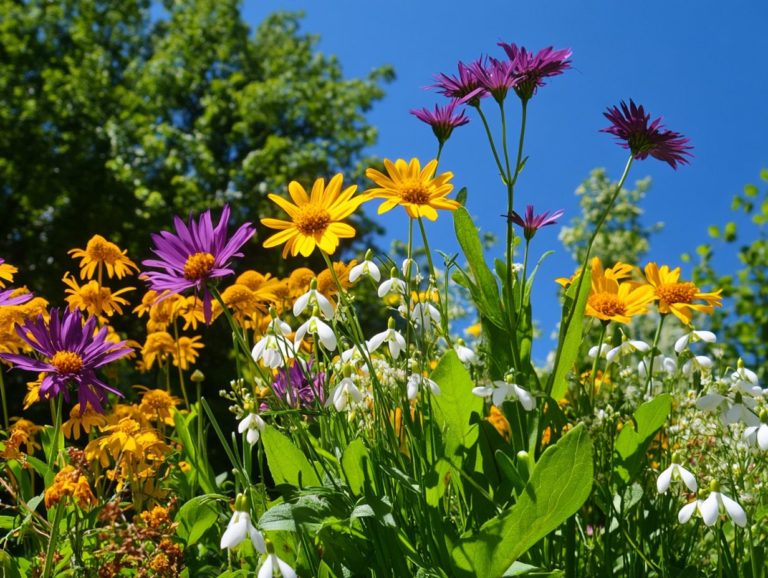Top 5 Colorful Shrubs for Cold Climates
Transform your cold climate garden into a vibrant oasis with colorful shrubs! The right shrubs can truly make a world of difference.
This guide features five stunning options Vibrant Viburnum, Beautiful Bluebeard, Pretty Pink Spirea, Cheerful Chokeberry, and Lovely Lilac. These shrubs thrive in frigid conditions and infuse your garden with vibrant colors throughout the seasons.
Dive into their unique benefits and discover why these colorful shrubs are essential for any cold climate garden. Get ready to elevate your outdoor space like never before!
Contents
Key Takeaways:

- Vibrant Viburnum offers stunning flowers in pink, white, and red, thriving even in cold climates.
- Bluebeard features striking blue flowers with dark foliage, making it a standout in any garden.
- Pretty Pink Spirea is low-maintenance and adds lovely pink blooms to cold climate gardens.
1. Vibrant Viburnum
Vibrant Viburnum, especially varieties like Viburnum nudum, adds colorful foliage and texture to cold climate gardens. It looks beautiful against the snowy backdrop of winter.
This shrub captivates with rich purples and bright reds. Its leathery leaves create a striking visual contrast.
Viburnum nudum attracts many pollinators with its fragrant flowers, making it an ecological asset. Its berries provide crucial food for birds, enhancing biodiversity while ensuring seasonal interest into winter.
2. Beautiful Bluebeard
Beautiful Bluebeard, or Caryopteris, is the low-maintenance shrub you ve been searching for. It thrives in cold weather, dazzling with vibrant flowers that enhance your winter garden.
This remarkable plant is drought-tolerant, ideal for conserving resources while maintaining beauty. Imagine the aroma of its blooms inviting delightful pollinators during late summer and early fall.
With unique blue to lavender flowers, it creates breathtaking combinations with neighboring shrubs. Its resilience means it requires minimal upkeep, fitting seamlessly into your busy lifestyle.
3. Pretty Pink Spirea
Pretty Pink Spirea, or Spiraea, is the ornamental shrub you need. Its enchanting pink flowers bloom in late spring and summer, providing vibrant color in cold-climate gardens.
This beauty thrives in various temperature zones, making it perfect anywhere from northern to southern regions. Its compact shape and cascading blooms make it a stunning focal point in mixed borders and foundation plantings.
Spiraea attracts pollinators, offering them food throughout its blooming season. Its foliage transitions beautifully with the seasons, adding layers of interest to your garden design.
4. Cheerful Chokeberry
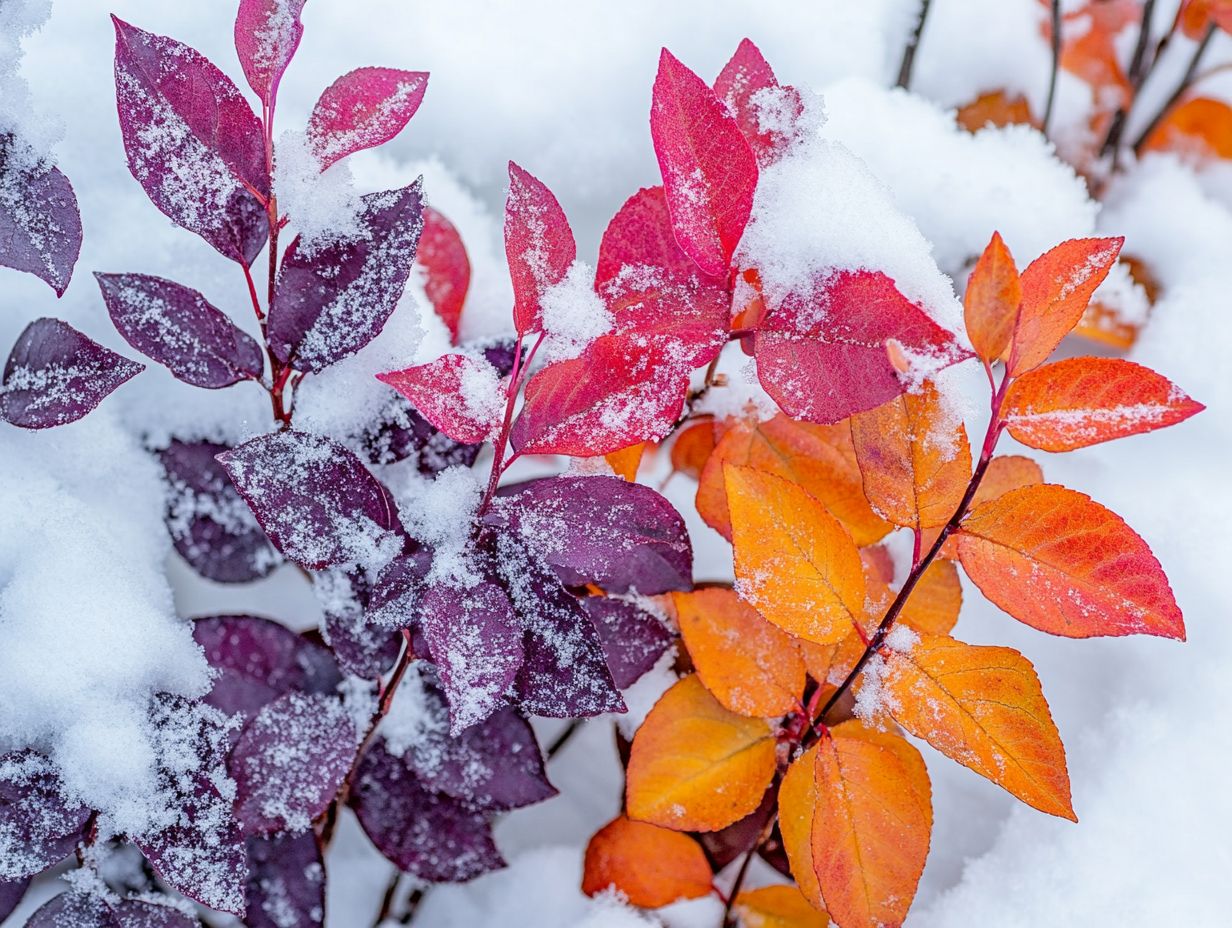
Cheerful Chokeberry, or Aronia, is more than just a berry-producing shrub; it s a delightful addition to your garden. It offers winter interest with its striking fall foliage and unique textures, making your garden more interesting.
Its impressive drought tolerance makes it an ideal choice for gardeners in cold climates. It thrives without the need for constant watering, improving your garden maintenance. The glossy green leaves provide a vibrant backdrop throughout the growing season. Its adaptability to well-draining soil ensures it remains robust, even in less-than-ideal conditions.
This shrub beautifies your landscape and enhances the resilience of your garden by attracting pollinators and supporting local wildlife. By incorporating this hardy plant, you elevate both the beauty and ecological balance of your cold-weather landscape. It attracts birds, making your garden feel alive!
5. Lovely Lilac
Lovely Lilac, or Syringa, is a true gem, celebrated for its fragrant flowers and early spring blooms. It s a cherished addition to gardens, especially in cold climates, enhancing botanical interest and adding winter beauty throughout the seasons.
When growing Syringa, various species like Syringa vulgaris thrive in well-drained soil and full sun. They ideally flourish in USDA hardiness zones 3 to 7. If you’re considering other options, the Korean lilac (Syringa oblata) adapts to slightly warmer environments, and pairing it with evergreen shrubs can provide year-round interest.
These stunning plants not only beautify your landscape with their vibrant hues and delightful scents but also attract a wealth of pollinators, including bees and butterflies. By incorporating lilacs into your outdoor space, you create a picturesque backdrop while supporting local ecosystems. It s a win-win for both aesthetics and nature.
Why Are Colorful Shrubs Important for Cold Climates?
Colorful shrubs are essential in cold climates. They provide seasonal interest and aesthetic charm, enhancing your overall landscape design while simplifying garden maintenance year-round, especially with pest-resistant plants for cold climates.
These vibrant plants will truly bring your outdoor spaces to life with their stunning colors. They also play a pivotal role in moisture retention within the soil an invaluable asset during dry spells. Additionally, these shrubs provide vital food sources for local bird populations, attracting a delightful array of species that contribute to the ecological balance in your garden.
Choosing hardy varieties tailored to specific USDA hardiness zones is crucial. This ensures your plants thrive even in harsh conditions, delivering the visual impact and resilience you desire. By focusing on these elements, you cultivate a flourishing ecosystem that enhances both the aesthetics of your garden and its wildlife.
What Are the Key Considerations When Choosing Shrubs for Cold Climates?
When selecting shrubs for cold climates, there are several key considerations to keep in mind. These include the plant’s hardiness, its adaptability to frigid weather, and specific soil requirements. Make sure to have well-draining soil for optimal growth.
It’s vital to assess the USDA hardiness zone compatibility of each shrub to ensure it can flourish amid local temperature extremes. Don t overlook potential moisture retention needs; many cold-climate shrubs, especially flowering ones, require consistent hydration during their establishment phase.
Choosing drought-tolerant varieties, especially low-maintenance plants, significantly eases your maintenance efforts while promoting sustainability in your gardening practices. Opting for native plants is essential; they tend to have natural resilience and are well-suited to local ecosystems. This requires less irrigation and offers habitats for beneficial wildlife, creating a thriving ecosystem.
Transform Your Cold Climate Garden with Colorful Shrubs!
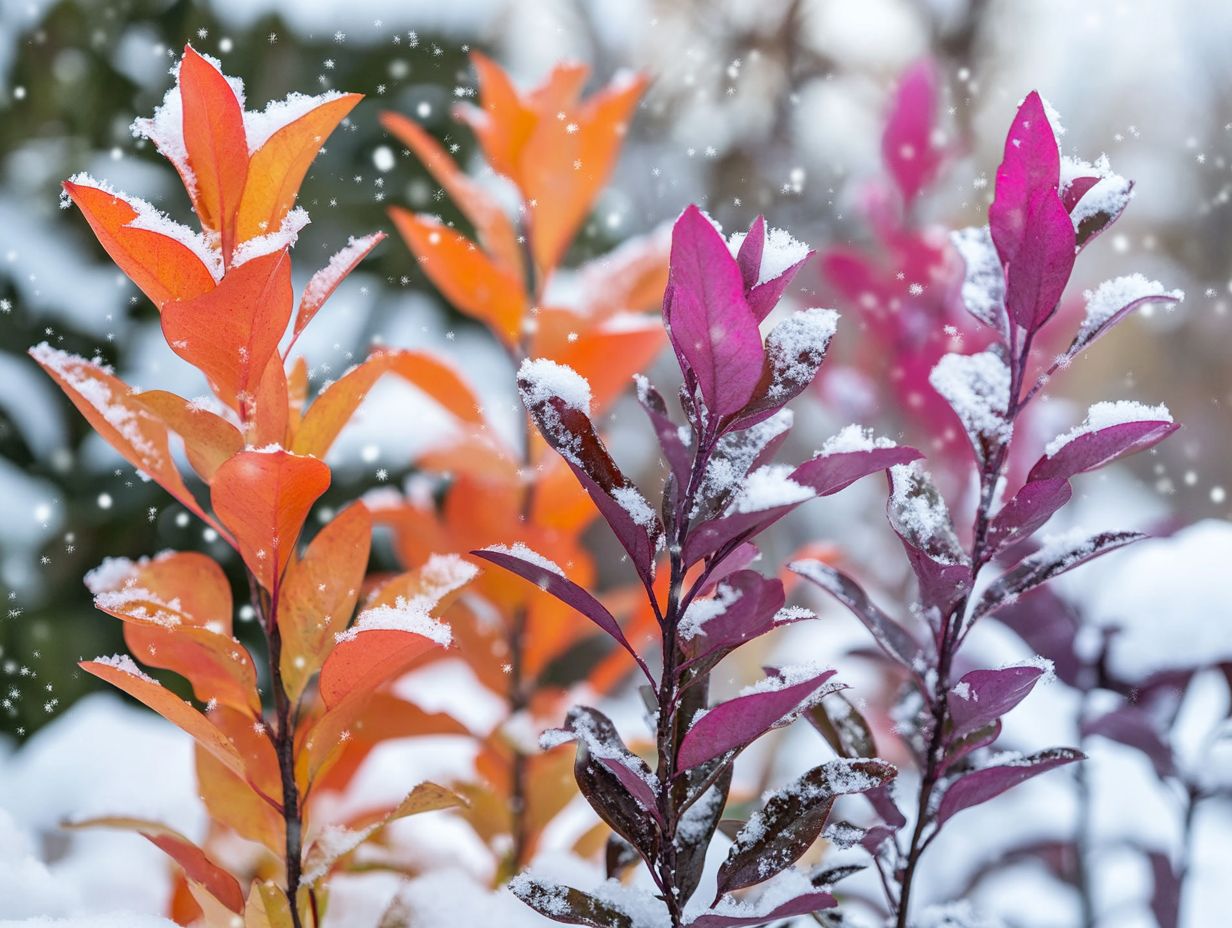
Colorful shrubs can significantly elevate your cold climate garden by adding vibrant hues and unique textures. This enhances the overall botanical interest and landscape design throughout the seasons, especially when paired with top planters for cold-climate gardening and decorative shrubs.
For instance, the fiery red branches of the Cornus alba, or red-twig dogwood, create a stunning visual contrast against a blanket of white snow in winter. In summer, their glossy green leaves come to life, offering a dynamic backdrop.
In spring, the delicate blooms of spireas and the cheerful yellow of potentillas attract various pollinators, nurturing a thriving ecosystem right in your backyard while enhancing the beauty of your garden decor.
These shrubs add visual diversity and elegance to your landscape. They define pathways and borders, ensuring your garden remains functional and aesthetically pleasing all year round.
Discover More Colorful Options for Your Cold Climate Garden!
Besides popular choices, you’ll find many colorful options for cold climate gardens. These include flowering and ornamental shrubs that enhance the visual appeal of any landscape.
Consider the vibrant red twigs of the Red Osier Dogwood. This striking shrub not only offers a stunning winter contrast but also supports local wildlife by providing food for birds. Additionally, the flowering currant dazzles with its pink blooms in early spring, attracting hummingbirds like a magnet.
Don t overlook lilacs! Revered for their intoxicating fragrance and lush purple flowers that bloom in late spring, they add a sensory experience to your garden. These shrubs easily integrate into your existing design, providing texture and seasonal interest.
Their hardiness ensures they thrive even in colder climates, making them a reliable choice for year-round enjoyment.
How to Maintain Shrubs in Cold Climates
Maintaining shrubs in cold climates requires specific garden practices to ensure their health and longevity. Essential tasks include regular pruning and covering the soil with materials to keep it moist.
These practices are crucial for protecting young shrubs from freezing temperatures and enhancing their ability to absorb nutrients during the growing season. Implement winter protection methods, like wrapping vulnerable plants or using burlap to shield against harsh winds. You can significantly bolster their resilience!
Proper fertilization in the fall prepares roots for the cold months ahead. Moisture retention strategies help regulate soil temperature. By taking these proactive steps, you create a thriving environment that withstands winter challenges.
The Benefits of Planting Shrubs in Cold Climates
Planting shrubs in cold climates offers a wealth of advantages, from enhancing garden design to increasing winter interest and improving biodiversity in the ecosystem. These resilient plants are invaluable for creating robust gardens.
Beyond their visual appeal, hardy shrubs serve a vital purpose by providing essential food for birds during harsh winter months. When positioned thoughtfully, they also attract beneficial insects, promoting overall garden health.
The interplay of evergreen and deciduous varieties offers striking contrasts against the stark winter backdrop, enriching the landscape’s allure.
By understanding how different shrubs interact within their environment and their role in nurturing a thriving ecosystem, you can create a sanctuary for wildlife while enjoying their beauty throughout the seasons.
Frequently Asked Questions
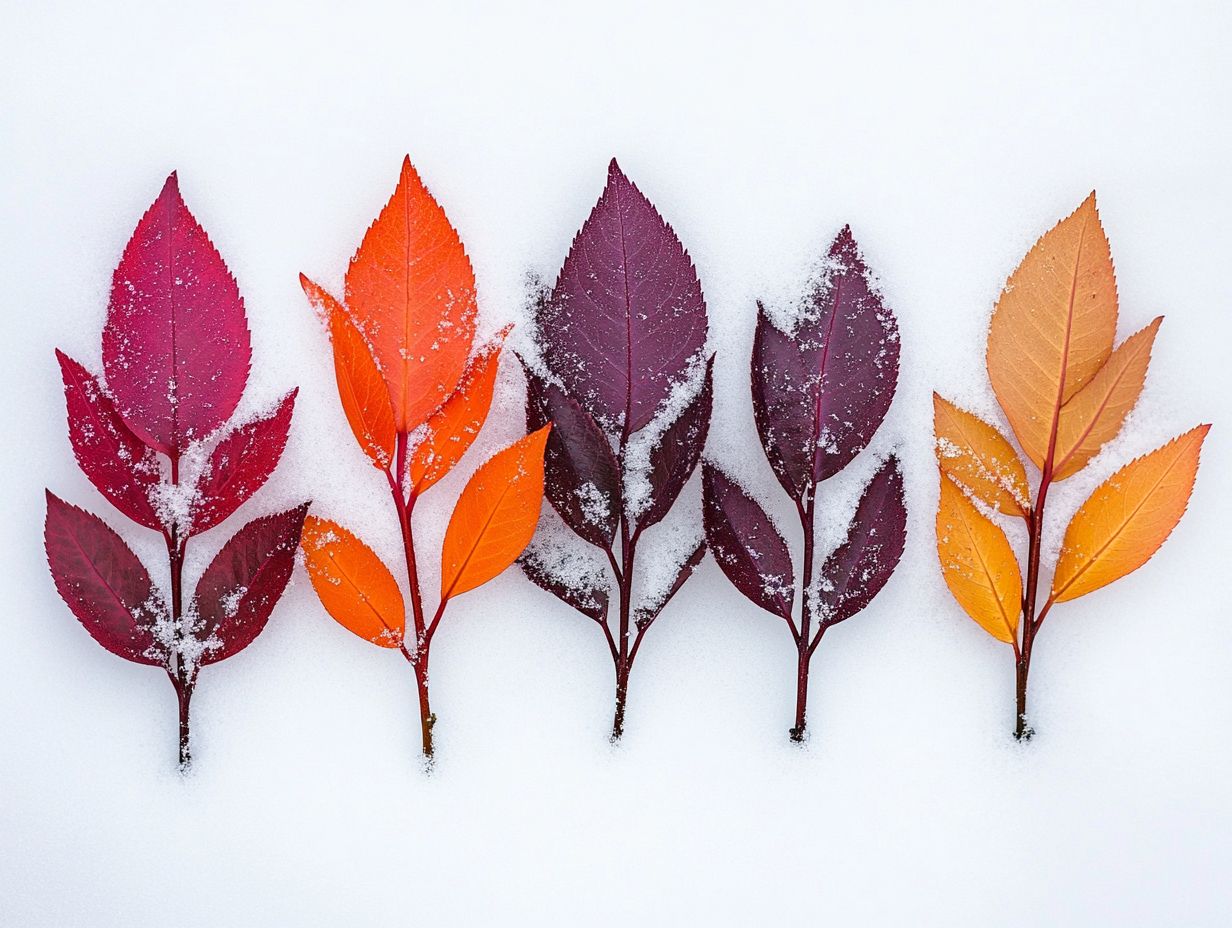
Got questions about the best colorful shrubs for cold climates? We ve got the answers you need!
Don t miss out on enhancing your winter garden with these vibrant shrubs!
What are the top 5 colorful shrubs for cold climates?
The top 5 shrubs for cold-climate gardens are red twig dogwood, winterberry holly, dwarf burning bush, purpleleaf sand cherry, and red chokeberry.
What is special about these shrubs for cold climates?
These shrubs thrive in cold temperatures while maintaining their vibrant colors. For those looking to enhance their gardens, consider the top 5 ground covers for cold climates as they add a pop of color to the winter landscape.
What colors do these shrubs come in?
The shrubs come in various colors, including red, yellow, orange, purple, and green. They are perfect for adding a splash of color to a winter garden.
How do I care for these shrubs in cold climates?
These shrubs are hardy and low maintenance. They need minimal watering and pruning.
However, protect them from harsh winds and heavy snowfall.
Can I plant these shrubs in any type of soil?
These shrubs prefer soil that drains well and is slightly sour, which helps them grow better. They can also tolerate a range of soil conditions.
Amend the soil if it s too compact or has a high pH.
When is the best time to plant these shrubs?
The best time to plant these shrubs is in the late fall or early spring when the ground is still workable.
This gives the shrubs a chance to establish their roots before the harsh winter weather sets in.

